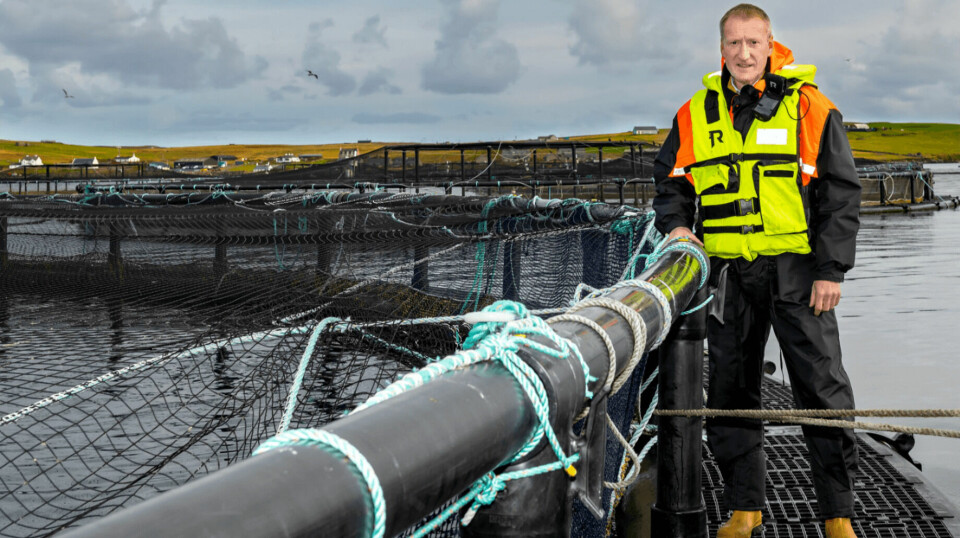
‘A huge relief for salmon farmers’
Minister reiterates that marine 'no-go zones' won't be imposed by 2026
Confirmation today that the Scottish Government will not pursue plans to make 10% of the nation’s seas into no-go zones is a “huge relief” for salmon farmers, said Tavish Scott, chief executive of trade body Salmon Scotland.
Net Zero Secretary Mairi McAllan announced that proposals to create Highly Protected Marine Areas (HPMAs) by 2026 will not be progressed.
Confirmation of the decision, first announced by McAllan to the Scottish Parliament in June, accompanied the publication of the Scottish Government’s response to a consultation about HPMAs, which were devised as part of the ruing Scottish National Party’s power sharing deal with the Scottish Greens. The Government's response can be read here.
There were 4,502 responses to the consultation, including 2,018 standard campaign responses organised via Scottish Environment LINK supporting HPMAs.
Of the individual ‘substantive’ responses received, more than three-quarters (76%) opposed HPMAs.
'Right to listen'
The Scottish salmon sector repeatedly raised concerns about the proposals, which it said would impose an extra barrier on aquaculture expansion.
Scott said: “This analysis confirms that individuals were overwhelmingly opposed to the introduction of HPMAs, and the government was right to listen to these concerns and shelve the proposals.
“This confirmation is a huge relief for salmon farmers and all those who rely on our sector who were concerned about the impact on their livelihoods.
“I am grateful to all the MSPs who spoke up in support of our sector and rural Scotland.
“We once again commit to working with the Scottish Government to develop workable proposals that safeguard both livelihoods and the marine environment on which they rely.”
MPA network
Although HPMAs have been scrapped, the Scottish Government will continue efforts to protect and restore the marine environment, which it says consultation respondents who are both for and against HPMAs agree is a good idea.
“The Government is firmly committed to protecting our marine environment and will continue to work closely with coastal communities and industries to protect Scotland’s seas for the benefit of all. As a priority this includes completing management measures for our existing Marine Protected Area (MPA) network and protecting our Priority Marine Features,” said McAllan.
“I am determined to protect our oceans in a way that is fair, and to find a way forward that ensures our seas remain a source of prosperity for the nation, especially in our coastal and island communities.”
Space for engagement
In its response to the consultation, the Scottish Government commits to more “bottom up” consultation with coastal communities.
“The stakeholder engagement plan, which was published alongside the consultation, set out how stakeholders were intended to be involved throughout the processes of identifying and designating HPMAs,” it writes.
“However, we recognise that many communities and groups felt that they were not engaged prior to the consultation launch. We have listened to these concerns and therefore, going forward, we will engage early and allow for more space to hear from island and coastal communities, marine industries, and others with an interest in protecting Scotland’s seas.”
It also promises to take account of local knowledge and use a transparent evidence base for the basis of any decisions.
In line with EU
The government remains committed to change aligned to the European Union’s biodiversity strategy for 2030.
This strategy includes legally protecting at least 30% of the EU’s land area and 30% of its seas and strictly protecting at least a third of the EU’s protected areas, representing 10% of the EU land and 10% of EU sea - including all remaining primary and old-growth forests as well as other carbon rich ecosystems, such as peatlands, grasslands, wetlands, mangroves, and seagrass meadows.
More than 30% of Scotland’s seas are already designated as Marine Protected Areas (MPAs), but levels of protection and monitoring of MPAs vary.
The EU strategy also asks states to substantially reduce the negative impacts of fisheries and extraction activities on sensitive marine habitats and species, including on the seabed in support of achieving good environmental status.
“Member States need to ensure that marine resources are harvested sustainably, that carbon-rich ecosystems and important fish spawning and nursery areas are restored, and that there is zero-tolerance for illegal practices,” states the strategy.
























































